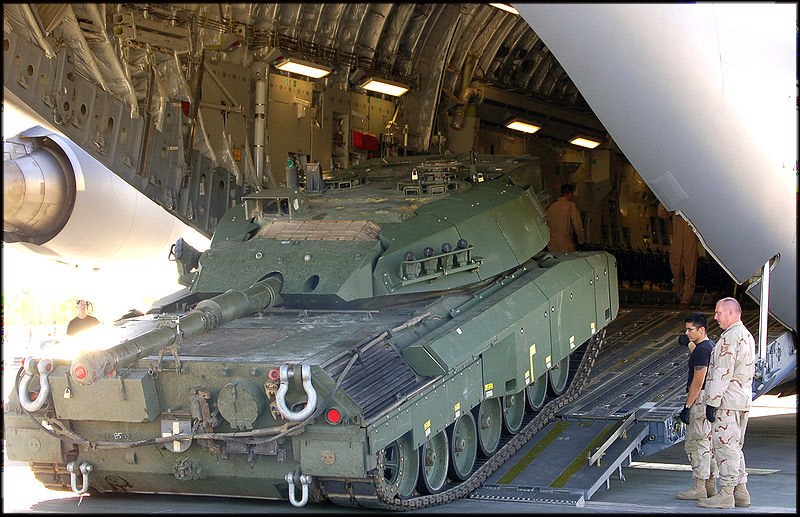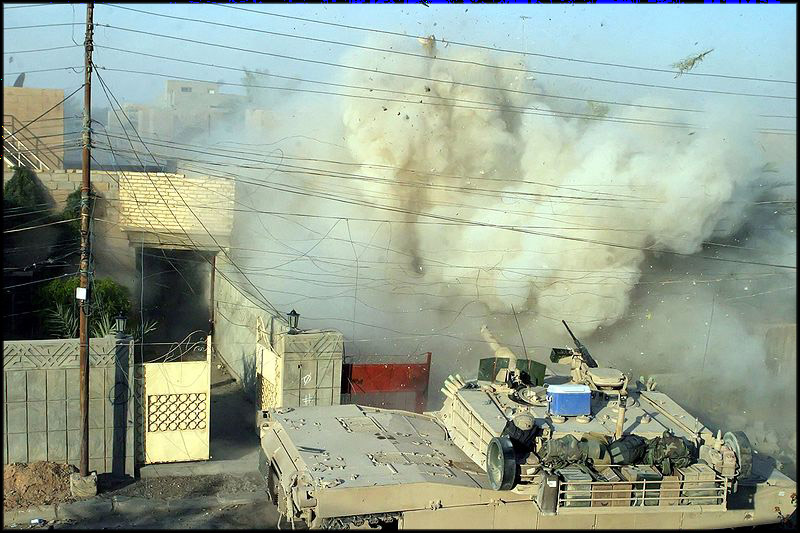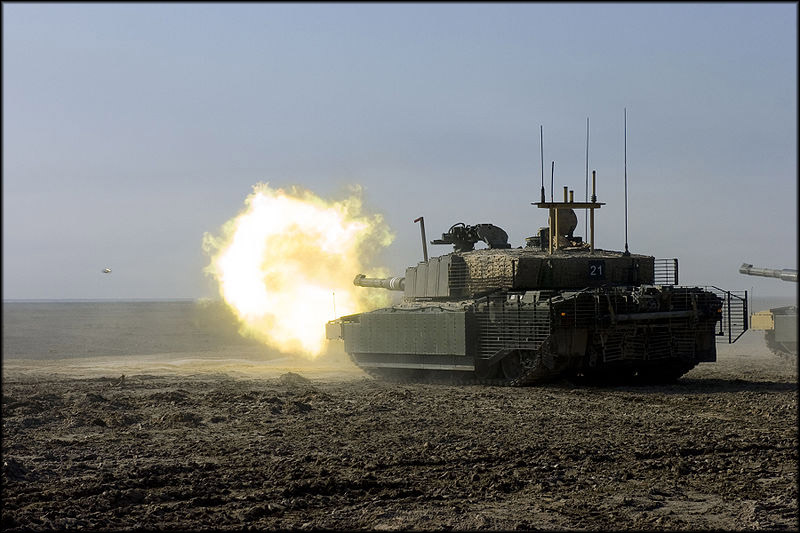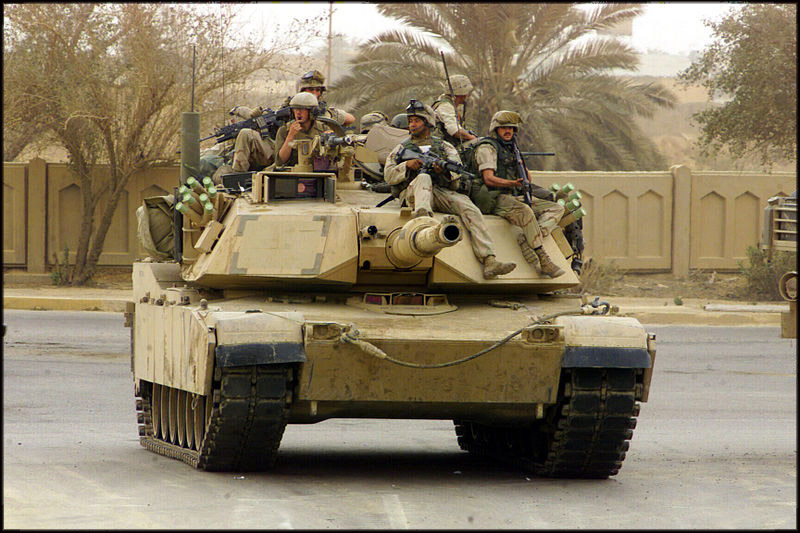Let Your Grog Flag Fly!
Recent Articles
GARPA 17, 4/26/13
SimCity AAR Part 1, 4/25/13
Announcing MayViation, 4/24/13
Second Look at Wargame AirLand Battle, 4/21/13
First Look at Wargame AirLand Battle 4/19/13
AAR of Dark Age Minis Battle, 4/18/13
Video Review of Zulus on the Ramparts, 4/14/13
GARPA 16, 4/12/13
Crusader Kings II AAR Part 16, 4/11/13
Book Review: Ninja: 1000 Years of the Shadow Warrior, 4/10/13
Review of Bioshock INfinite, 4/7/13
Review of XFX PRO650W Core Edition PSU, 4/5/13
Civilization V AAR, Part 13, 4/4/13
Fire with Fire, 3/31/13
GARPA 15, 3/29/13
Civilization V AAR, Part 12, 3/28/13
Wheaton INterview, 3/27/13
March Mayhem Winner, 3/25/13
Warlock Multiplayer AAR, 3/21/13
WWII PTO Alternate Histories, 3/20/13
GARPA 14, 3/15/13
Crusader Kings II AAR, part 15, 3/14/13
Civilization V AAR, part 11, 3/7/13
Prezcon Convention Coverage, 3/2/13
Civilization V AAR, part 10, 3/3/13
Click here for our
FULL Article Index
and
Screenshot features |

Tanks in the Streets
Andy Mills, 24 November, 2012
Andy takes a look at how the tank fits into urban combat
Overview
In 2003, Defence Minister, John McCallum announced that Canada was going to replace Leopard C2 Main Battle Tanks (MBT) with the lightly armored Styker mobile gun platform. He termed this move as necessary in order to replace “… tanks with a more modern, direct fire system.” He continued on saying that the Leopard C2 was “… too big and heavy to be useful in countries such as Afghanistan…” McCallum, along with many defense critics, believed that any modern conflict would be asymmetrical in nature and take the form of an air or naval engagement. For many Western nations the idea of putting troops on the ground supported by heavy armor was not in vogue. Common wisdom, at the time, dictated that first response to any act of aggression may be a cruise missile attack launched from naval assets or a precision air strike conducted by stealth aircraft. The concept of NATO nations deploying heavy armor was anathema to the emerging model of modern warfare that focused on communications technology, air power and fast-moving lightly armored vehicles. Unfortunately, this model ignored lessons from the past and discounted what was actually happening on the ground in Iraq and Afghanistan. Luckily for military planners, the troops on the ground took matters into their own hands and began to use heavy armor in unconventional ways. One example of this ability to adapt and overcome adversity was the use of armor in urban environments.
History
In the past, urban combat was largely considered to be the domain of infantry with armor relegated to a limited fire support role. Due to this prevailing view, relatively little research on using armor in urban environments has been generated, but that is starting to change. Recently acknowledged experiences gained during World War Two, Vietnam and Lebanon, in addition to modern lessons from Iraq and Afghanistan have yielded valuable insights into the use of armor. The fact urban areas have witnessed significant growth since 1950 also makes discussion on this topic relevant. Based on this trend of increased urbanization, military planners believe it is most likely that future conflicts will take place in cities and/or other built-up areas. This development has not been lost on the armed forces of many countries which already place a great emphasis on training infantry for what is known as FIBUA (Fighting in Built-Up Areas) or MOUT (Mobile Operations in Urban Terrain). The role armor can play in FIBUA is now being re-examined and incorporated into this rapidly expanding picture of what future combat operations may look like.
Operational Environment
In the Boardroom
Maintaining an armored force, which includes MBT’s, is an expensive proposition for most nations. Previous to the conflicts in Iraq and Afghanistan, many countries adopted a “use it or lose it” mentality when it came to MBT’s. Since the end of the Cold War many critics have argued that tanks were becoming increasingly irrelevant in the modern battlespace and needed to be replaced with medium-sized mobile gun platforms. Many countries began to examine this medium gun platform concept as a viable alternative to expensive and less mobile MBT’s. Countries, such as Canada and USA, started to look at the M1128 Stryker Mobile Gun System, which has a 105mm gun mounted on a LAV (Light Armored Vehicle) III chassis. Proponents of this approach proposed that medium-sized platforms would be easier to transport by air and still provide a sufficient direct fire solution. As noted in the introduction, Canada even went so far as to announce that it was going to phase out the Leopard C2, its only MBT, in favor of an air portable solution. Research done on the use of armor in urban areas now proves that the decision to move away from MBT’s was more financially expedient than tactically sound.

Loading a Canadian Leopard C2 tank with upgraded armor on a C-17 for deployment to Afghanistan.
On the Battlefield
During the 1990’s, with first Gulf War still fresh in their minds, many military decision makers still considered the tank to be a weapons system that was best suited to symmetrical battles. During the expulsion of Iraqi troops from Kuwait in 1991, Allied armor fought in a number of tank versus tank engagements with Abrams M1A1 and Challenger 2 decisively defeating enemy T-55’s and T-72’s. During the second Gulf War, there was initially some conventional armored warfare, but like Afghanistan, the conflict turned into an asymmetrical conflict with insurgents employing hit-and-run tactics. After the fall of central government, Iraq became fragmented and power fell to various warlords who appropriated what weaponry they could to protect their interests. Firing from rooftops, erecting barricades to create ambushes and the remote detonation of explosives became staple tactics for insurgents. Military doctrine was not a primary concern for these fighters; they just practiced tactics that worked yielded some measure of success. The primary weapons used by insurgents were small arms, RPGs and IEDs. Heavier weapons did include some tanks, vehicle mounted anti-tank guns, mortars and small unguided rockets. With this kind of firepower, insurgents became a significant threat to Allied troops, especially in urban areas where communication and planning is more complicated due to the presence of extensive infrastructure and civilians. The urban battlespace is also problematic for artillery or tactical air support as the potential for collateral damage and various obstacles prevent the optimum use of precision weapons systems. In short, by fighting in built up areas insurgents can negate some of the technological advantages used by Allied troops. Just as it was in World War II, close quarters combat in urban areas is a very brutal and primal affair.
Why Tanks are Effective in Urban Environments
The answer is to this question is very simple: heavy armor provides increased survivability. In the past doctrine has placed an emphasis on the use of infantry in urban environments, but during and after the 2003 war in Iraq, tanks took on an important role-a role that could not be filled effectively by a lightly armored mobile gun platform.
Brute Force
Soldiers have learned that maintaining continual situational awareness in urban warfare is very difficult. With buildings and obstacles in such close proximity enemy forces can appear almost instantly, leaving the attackers at a disadvantage. The tank compensates for this by being able resist small arms or heavier fire during ambushes while the crew can take the enemy under fire immediately without requiring cover. Once the insurgents have revealed their positions they become targets for the accompanying infantry and the tank itself.
Properly constructed obstacles and barricades can bring infantry to a halt in an urban environment. Infantry may be unable to breach barriers without exposing themselves to heavy enemy fire and in most street fights there is no flanking position. With powerful engines (and in some cases dozer blades) tanks can demolish barricades or destroy obstacles with direct fire from the main gun to lead the advance. While performing in this role, the tank can also use machines guns to attack the enemy and provide cover for infantry. Tanks are fire resistant and in most cases burning obstacles may also be breached without undue risk to the vehicle or crew.
The tank has an inherent psychological advantage of creating fear among the enemy. During World War Two, the appearance or mention of Tiger tanks could panic Allied troops and tank commanders. This effect is amplified in an urban setting where the sheer size and enormous noise generated by a tank can be overwhelming. Some of the literature on Iraq states that insurgents had a disproportionate fear of being engaged by the main gun despite the fact most were killed by onboard machine guns. This phenomenon also works the in the opposite fashion for friendly troops by boosting morale. The arrival of a 60-ton armored behemoth that is impervious to enemy fire and sports a 105 mm cannon can instill a great deal of confidence in friendly troops.
Fire Power
The tank brings incredibly accurate fire power to the battlefield. In urban battles, tanks provide the “precision fire” that aircraft cannot match. Most post-World War Two tanks are armed with a stabilized main gun that ranges in size between 105mm to 120 mm. Tanks can usually fire a selection of specialized shells for attacking other tanks, destroying fortifications or even engaging enemy helicopters. In urban settings, tanks generally use high explosive shells to attack targets. These rounds can easily defeat most personnel concentrations, bunkers, technicals or enemy light armor that may otherwise pin down infantry. During battles in Iraq, there are records of Abrams tanks simply driving up to a bunker, while under heavy small arms or RPG fire, and destroying it with a round with from the main gun. This approach is very basic and allows the tank to capitalize on the marriage of superb armor and enormous fire power.
Aside from the main gun, tanks also bring a number of different caliber machine guns to a battle. The Abrams tanks used in Iraq carried a coaxial 7.62 mm machinegun that fired thousands of rounds in urban engagements and accounted for the greatest number of killed or wound insurgents. Many tankers reported changing out coaxial machine guns on a regular basis due to such heavy use. In some instances, tank commanders and loaders used .50 caliber or 7.62 mm machine guns mounted by their hatches on top of the tank turret. In built up areas a number of tank commanders preferred to fight in the hatch “open” position so they could maintain better situational awareness add their firepower to the main gun and coaxial weapons. In Iraq, as in previous conflicts, some tanks carried infantry on the rear deck during urban operations. These troops provided accurate small arms fire and close-in protection for the tank. This relationship was totally symbiotic as tanks in Iraq and Afghanistan not only provided significant fire power for infantry operations, but were used as bullet shields to recover personnel trapped in insurgent ambushes or wounded soldiers.

A US Marine M-1 tanks fires a high explosive round into a building during fighting in Fallujah
The Problems with Armor in Urban Conflicts
Close-In
Conventional doctrine has historically focused on using infantry in built-up areas as tanks face many disadvantages while operating in urban areas. Visibility is one of the biggest problems encountered by tank crews. If a tank is fighting with the hatch in the “closed” position visibility is limited to the viewports and/or displays screens. This gives insurgents a great deal of cover in getting close to the tank to use an explosive device or disable critical equipment. This problem is usually addressed by assigning supporting infantry to protect the tank. In some instances, tanks crews can take advantage of their heavy armor and provide mutual support by using coaxial machine gun fire to “sweep” enemy troops off one another.
Restrictive Environment
Small and crowded city streets can be a challenge for a regular vehicle let alone a tank. While a tank can crush or destroy many obstacles, taking such action may not be in the best interest of the mission. Tank commanders and drivers need to be aware of potential entanglements, such as telephone poles or light standards that can stop a turret from rotating or electrical wires that may adversely affect the crew or onboard systems. Close-in fighting also puts the tank at a disadvantage as it can only elevate or depress weapons to a certain extent. Trying to attack rooftop targets or prone troops at street level target may be impossible. In these kinds of situations situational awareness, good planning, and accompanying infantry are critical to the success of the mission.
Big Weapons
One the lessons learned by the military in Iraq was that the use of main gun Sabot (amour piercing) ammunition or .50 caliber machine gun rounds world penetrate many buildings and cause inadvertent civilian casualties or collateral damage. During fighting in Sadr City (Iraq), US tankers observed that HEAT (High Explosive Anti-Tank) rounds from the 105mm main gun exploded at the site of impact, then dissipated. This discovery led to increased use of the main gun and light caliber machine guns during close in fighting.

The British Challenger 2 tank was used in Iraq to support troops during urban operations
Enemy Armor
In urban warfare the advantage of the first shot usually goes to the defender. This advantage can be used by the enemy to negate some of the differences between modern and older armor. By placing tanks in strategic ambush locations, older armor may be able take advantage of degraded situational awareness to fire the first shot. In short, the urban environment works to provide older and/or lower quality armor with a chance to maximize the use of their older systems against superior weapons and better trained crews
Logistics
Tanks require a great deal of logistical support in order to be effective. Fuel, spare parts, ammunition, and regular maintenance are all critical to keeping a tank combat ready. Tanks absorb a great deal of enemy fire in close quarters fighting and the resulting maintenance needs are very high. Due to these very basic, yet extensive requirements, fielding a force of tanks is not an option for many nations.

Close coordination between troops and tanks is essential to succeed in urban combat
The Future
Previous to the conflicts in Iraq and Afghanistan, tanks were becoming an endangered species on the modern battlefield. While common wisdom dictated that there was no place in urban warfare for heavy armor the warriors on the ground proved the critics wrong. Nations, such as The US, the UK, and Canada have all used tanks during the conflicts in either Iraq or Afghanistan. Canada reversed its course on retiring its armor and purchased a fleet of new Leopard 2 tanks based on the Afghanistan experience. While some military pundits still espouse the concept of fast, lightly armored platforms for the future the tank has proven that it will have a place on the battlefield, and in the streets, for many years to come.
Discuss it our forums >>
|
Please support the folks that support GrogHeads
|





